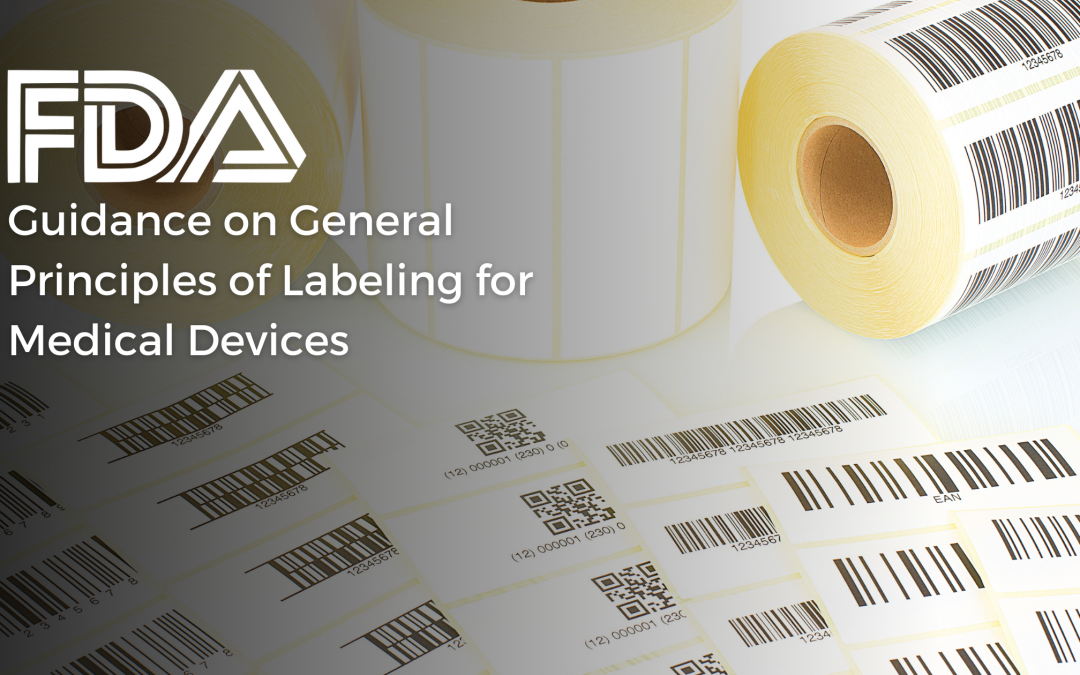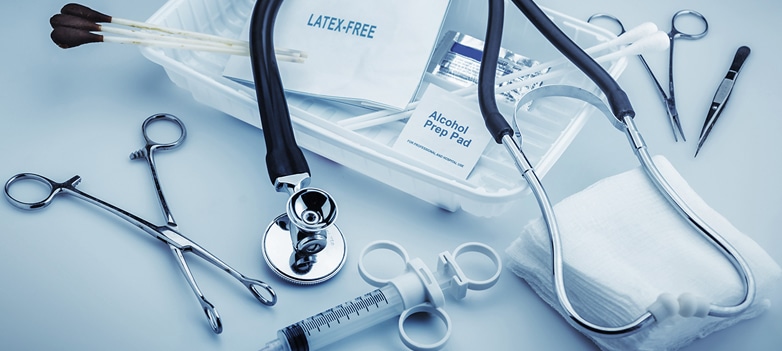The core principles of the regulatory approach for labeling for medical devices are described in a guidance document issued by the Food and Drug Administration (FDA or the Agency), the US regulating authority, earlier in 1989. Since that time, the document has been updated in order to reflect changes to the applicable legislation.
The authority states that the provisions of the document are not binging and constitute only recommendations and clarifications to be considered. Moreover, an interested party may apply an alternative approach, provided such approach complies with the regulatory requirements and has been agreed with the authority in advance.

Table of Contents
Regulatory Background
The Center for Devices and Radiological Health (CDRH), a division of the FDA which nowadays is responsible for assessing the safety of medical devices intended to be marketed and used in the US, was initially established in October 1982 when the Bureau of Medical Devices and the Bureau of Radiological Health were merged. The CDRH is responsible for developing and implementing programs aimed at achieving a high level of patient health protection by ensuring that any and all medical devices placed on the market meet applicable safety and performance requirements. As part of this process, the Center is also entitled to assess compliance with the requirements for labeling for medical devices.
The present guidance highlights the main points related to the regulatory requirements for labeling. In particular, it describes the core principles of the approach employed by the FDA and provides clarifications regarding the interpretation of applicable legislation, including but not limited to the Food, Drug, and Cosmetic (FD&C) Act.
The scope of the guidance covers such aspects as:
- False and misleading labeling;
- Information the labeling shall include;
- Information to be provided on the package;
- Directions for use and how they should be provided;
- Prescription device requirements; and
- Device-specific requirements to be applied in case of certain types of medical devices or intended purposes.
Legislation Overview
Apart from the FD&C Act mentioned above, the requirements for labeling for medical devices are also set forth by the Fair Packaging and labeling Act (FPLA) which applies in the case of over-the-counter (OTC) medical devices. If the product in question contains radiation-emitting elements, its labeling should also comply with the regulatory requirements prescribed by the Radiation Control for Health and Safety Act (RCHSA).
The final versions of all applicable regulations are published in the Federal Register. In general, the applicable requirements are described in the following regulations:
- 21 CFR Part 801 – General Device labeling;
- 21 CFR Part 809 – In Vitro Diagnostic Products;
- 21 CFR Part 812 – Investigational Device Exemption;
- 21 CFR Part 820 – Good Manufacturing Practices;
- 21 CFR Part 1010 – General Electronic Products.
However, the FD&C Act plays a prominent role in establishing the regulatory framework on labeling for medical devices. It addresses the following regulatory matters:
- Definitions of the main terms and concepts;
- Prohibited actions including adulteration and misbranding;
- Criteria of adulteration and misbranding.
The regulatory requirements set forth by the FPLA should be applied only with regard to medical devices that are made available to end-users directly via retail outlets. The provisions of the document are closely connected with the corresponding provisions of the FD&C Act.
The scope of the RCHSA covers not only medical devices but other devices containing radiation-emitting elements.
Terms and Definitions: Label, Labeling, Advertising
First, the document describes how the terms “label” and “labeling” should be distinguished. The Agency additionally emphasizes that in spite of close relation, these terms should not be used as interchangeable. The regulating authority explains the difference in the following way: the “label” refers to the element placed directly on a medical device itself, while the “labeling” covers all the information supplied with the device.
According to Section 201(k), the “label” stands for a display of written, printed, or graphic matter upon the immediate container of any article.
At the same time, in Section 201(m) the “labeling” is defined as all labels and other written, printed, or graphic matter:
- upon any article or any of its containers or wrappers, or
- accompanying such article at any time while a device is held for sale after shipment or delivery for shipment in interstate commerce.
It is important to mention that the scope covered by the term “accompanying” exceeds the materials directly supplied together with a medical device. According to the clarifications provided by the FDA, it also covers any materials associated with a device, such as posters, tags, pamphlets, circulars, booklets, brochures, instruction books, direction sheets, fillers, and other similar materials. It also covers the materials provided in the course of shipment of a medical device in the case of importing to the US or exporting to another country.
Another term the present guidance describes in detail is “advertising.” In particular, the document explains the difference between these two terms and how they should be used under the current legislation. At first sight, the underlying materials are intended for similar purposes – informing (potential) customers about the medical device, its functions, and features. The authority states that the concept of “labeling” is not only wider, but also covers the “advertising”. In this regard, the Agency refers to an appellate court decision stating that: “Most, if not all advertising, is labeling. The term ‘labeling’ is defined in the FD&C Act as including all printed matter accompanying an article. Congress did not, and we cannot, exclude from the definition printed matter which constitutes advertising”. Hence, any and all advertising materials used to promote a medical device placed on the market should comply with the applicable regulatory requirements for labeling.
Misbranding
As mentioned, current legislation also outlines prohibited activities, such as misbranding and false or misleading labeling. A medical device will be deemed misbranded in the following cases:
- The labeling contains false or misleading information or statements;
- Neither package nor label contains information about the responsible party (e.g., medical device manufacturer or distributor);
- Neither package nor label contains accurate information regarding the quantity of content;
- There are no wordings that are mandatory for use;
- There are no detailed and accurate enough directions for use, especially in terms of warnings;
- The use in the way prescribed in labeling creates additional risks for patient’s health;
- The labeling fails to meet the applicable regulatory requirements with regard to the colors to be used.
The points listed above are general and thus could be used not only for medical devices but also for other healthcare products subject to FDA’s oversight, such as medicines or biological products.
In summary, the present FDA guidance describes the main principles upon which the current regulatory framework on labeling for medical devices is based. The document pays special attention to the prohibited actions related to how the information about medical devices should be provided.
Sources:
How Can RegDesk Help?
RegDesk is a next-generation web-based software for medical device and IVD companies. Our cutting-edge platform uses machine learning to provide regulatory intelligence, application preparation, submission, and approvals management globally. Our clients also have access to our network of over 4000 compliance experts worldwide to obtain verification on critical questions. Applications that normally take 6 months to prepare can now be prepared within 6 days using RegDesk Dash(TM). Global expansion has never been this simple.


